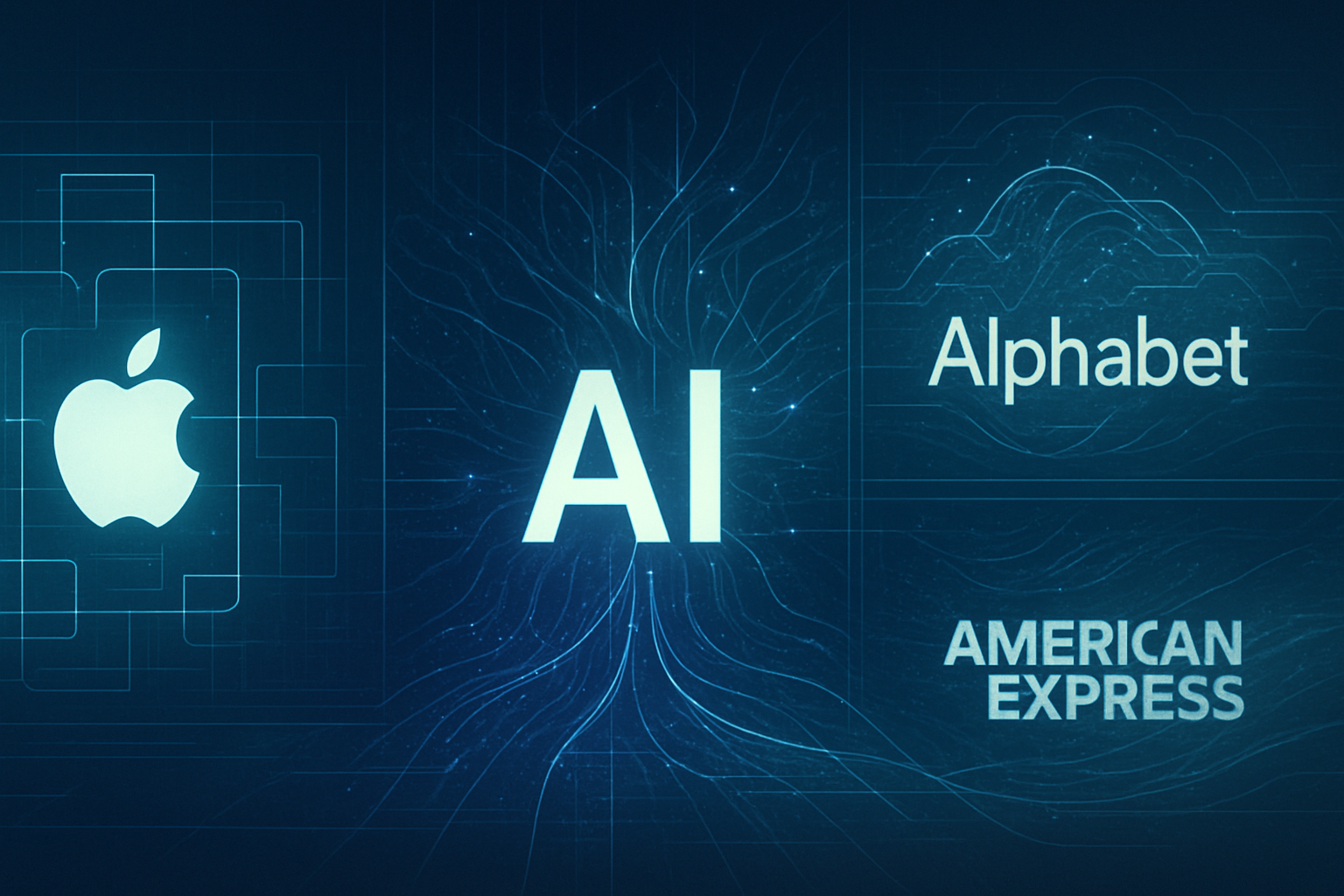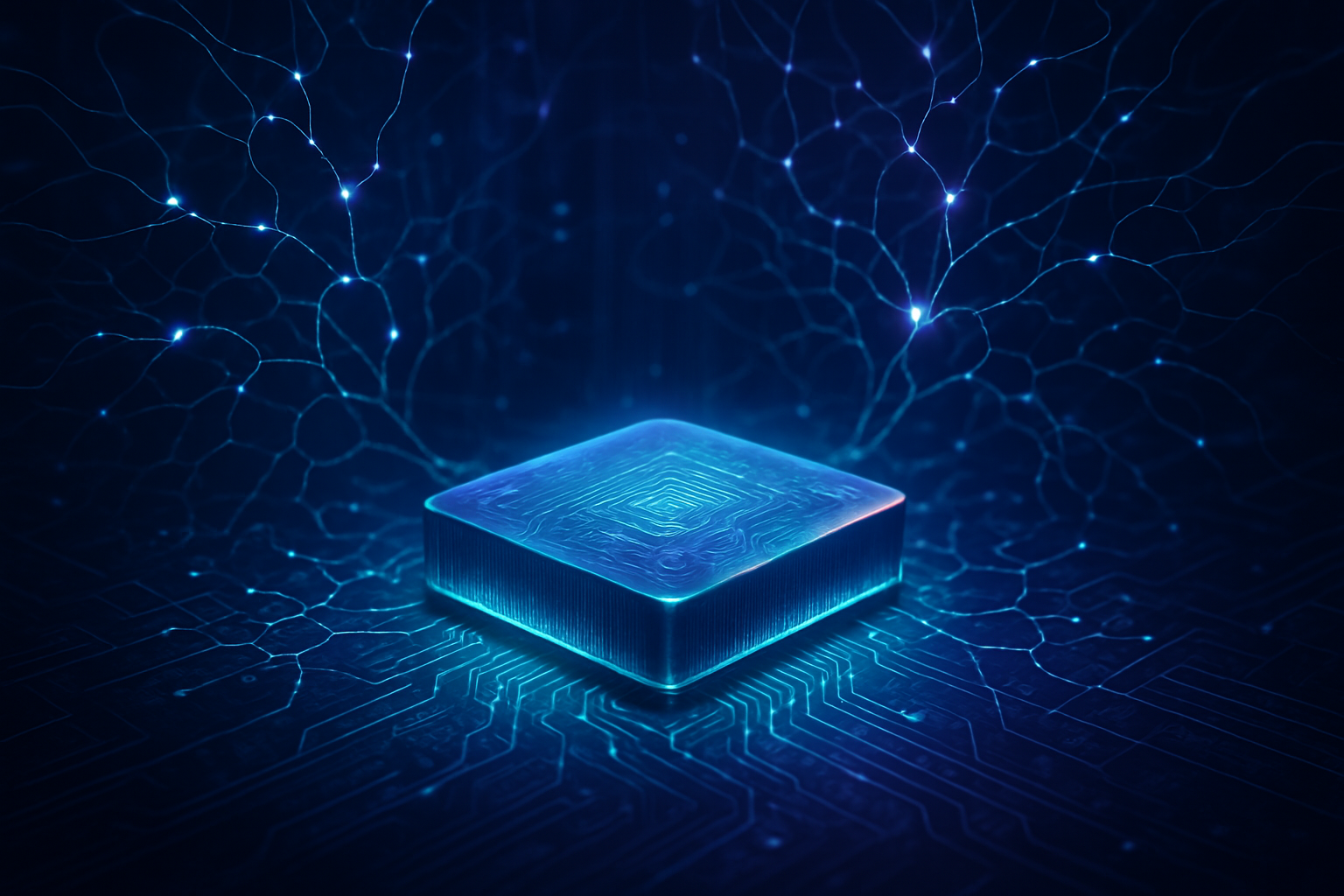In a significant stride for artificial intelligence, Microsoft (NASDAQ: MSFT) officially announced and released its Fara-7B model on November 24, 2025. This groundbreaking development, placing the event firmly in the recent past relative to December 5, 2025, introduces an "agentic" small language model (SLM) meticulously engineered for computer use. Fara-7B is not merely another chatbot; it is designed to interact with computer interfaces, such as a mouse and keyboard, by visually interpreting screenshots of a browser window and then autonomously executing single-step actions to complete tasks for users.
This release signals a pivotal shift in the AI landscape, moving beyond purely language-based AI to action models capable of executing real-world tasks directly on a computer. Its immediate significance lies in its ability to operate on-device, offering unprecedented privacy by keeping sensitive data local, coupled with reduced latency and competitive performance against much larger models. Fara-7B's open-weight nature further democratizes access to sophisticated AI capabilities, fostering innovation across the developer community.
Fara-7B: The Technical Blueprint for On-Device Autonomy
Microsoft's Fara-7B is a pioneering 7-billion-parameter "agentic" SLM, specifically tailored for Computer Use Agent (CUA) tasks. Built upon the Qwen 2.5-VL-7B architecture, this multimodal decoder-only model processes screenshots of a computer interface alongside text-based user goals and historical interactions. Its core capability lies in generating a "chain of thought" for internal reasoning, followed by grounded actions like predicting click coordinates, typing text, or scrolling.
Key technical specifications include its compact 7 billion parameters, enabling on-device execution, particularly on forthcoming Windows 11 Copilot+ PCs equipped with Neural Processing Units (NPUs). It boasts an impressive 128,000-token context length, crucial for managing complex, multi-step tasks. Fara-7B was trained on a massive, fully synthetic dataset of 145,603 verified trajectories, encompassing over one million individual actions across more than 70,000 unique domains, generated using Microsoft's novel FaraGen multi-agent pipeline. This efficient training, utilizing 64 H100 GPUs over 2.5 days, results in a model capable of completing tasks in an average of ~16 steps, significantly fewer than comparable models, leading to a lower estimated cost per task of about $0.025.
Fara-7B distinguishes itself from previous approaches through "pixel sovereignty" – its ability to operate entirely on the local device, ensuring sensitive data remains private. Unlike most powerful AI agents that rely on cloud infrastructure, Fara-7B's visual-first interaction directly processes screenshots, mimicking human observation without depending on accessibility trees or underlying code. This end-to-end single model design, rather than complex multi-model stacks, allows it to achieve state-of-the-art performance in its class, even outperforming larger systems like OpenAI's GPT-4o when configured for web browsing tasks.
Initial reactions from the AI research community have been overwhelmingly positive. Experts describe Fara-7B as a "groundbreaking innovation" and one of the "most exciting AI releases in the past few months." The open-weight accessibility under an MIT license has been widely applauded, expected to foster community experimentation and accelerate development. The emphasis on privacy and efficiency through on-device execution is a major draw, particularly for enterprises handling sensitive data. While acknowledging its experimental nature and potential for inaccuracies or hallucinations on complex tasks, Microsoft (NASDAQ: MSFT) has been transparent, advising sandboxed environments and incorporating robust safety features, including a high refusal rate for harmful tasks and critical point detection requiring user consent.
Reshaping the AI Industry: Impact on Companies and Competitive Dynamics
The release of Microsoft Fara-7B is set to ripple across the AI industry, creating new opportunities and intensifying competition. Several entities stand to significantly benefit from this development. Users and manufacturers of Windows 11 Copilot+ PCs, for instance, will gain a strong selling point as Fara-7B can run natively on these devices, offering personal automation with enhanced privacy. Developers and researchers, empowered by Fara-7B's open-weight nature and MIT license, now have an accessible and efficient tool to build and experiment with agentic AI applications, fostering broader innovation. Companies with stringent data privacy requirements will find Fara-7B's on-device processing a compelling solution, while industries reliant on repetitive web tasks, such as customer service, e-commerce, and travel, can leverage its automation capabilities for increased efficiency.
For major AI labs and tech companies, Fara-7B presents significant competitive implications. Microsoft (NASDAQ: MSFT) solidifies its position in agentic AI and on-device processing, challenging the notion that only massive, cloud-based models can deliver sophisticated agentic functionality. This could pressure other large language model (LLM) providers like OpenAI (NASDAQ: OPENA) and Anthropic to develop more efficient, specialized smaller models or to further justify the cost and complexity of their larger offerings for specific use cases. Fara-7B's innovative approach of compressing multi-agent system behavior into a single multimodal decoder-only model, along with its synthetic data generation techniques (FaraGen), could inspire a new wave of architectural innovation across the industry.
Potential disruptions to existing products and services are considerable. Cloud-dependent automation tools, especially those handling sensitive data or requiring low latency, may face competition from Fara-7B's on-device, privacy-enhanced alternative. Traditional Robotic Process Automation (RPA) could see certain aspects disrupted, particularly for dynamic web environments, as Fara-7B's visual, human-like interaction offers a more robust and flexible approach. Furthermore, Fara-7B's capabilities in information retrieval and task-oriented results could enhance or integrate with existing search tools, while personal digital assistants might evolve to incorporate its "computer use agent" functionalities, enabling more complex, multi-step actions.
Strategically, Fara-7B positions Microsoft (NASDAQ: MSFT) with a significant advantage in efficiency, accessibility, and privacy-first on-device AI. Its compact size and open-weight release democratize agentic capabilities, while its focus on local processing directly addresses growing data privacy concerns. By specializing as a Computer Use Agent, Fara-7B carves out a distinct niche, potentially outperforming larger, general-purpose LLMs in this specific domain. It also serves as a crucial foundation for future AI-powered operating systems, hinting at a deeper integration between AI and personal computing. The open and experimental nature of its release fosters community-driven innovation, further accelerating its development and diverse applications.
A Broader AI Perspective: Trends, Impacts, and Milestones
Microsoft Fara-7B's introduction is a significant event that resonates with several overarching trends in the AI landscape. It underscores the growing importance of Small Language Models (SLMs) and on-device AI, where models balance strong performance with lower resource usage, faster response times, and enhanced privacy through local execution. Fara-7B is a prime example of "agentic AI," systems designed to act autonomously to achieve user goals, marking a clear shift from purely conversational AI to systems that actively interact with and control computing environments. Its open-weight release aligns with the burgeoning open-source AI movement, challenging proprietary systems and fostering global collaboration. Moreover, its ability to "see" screenshots and interpret visual information for action highlights the increasing significance of multimodal AI.
The impacts of Fara-7B are far-reaching. Its on-device operation and "pixel sovereignty" greatly enhance privacy, a critical factor for regulated industries. This local execution also slashes latency and costs, with Microsoft (NASDAQ: MSFT) estimating a full task at around 2.5 cents, a stark contrast to the roughly 30 cents for large-scale cloud-based agents. Fara-7B democratizes access to sophisticated AI automation, making it available to a wider range of users and developers without extensive computational resources. This, in turn, enables the automation of numerous routine web tasks, from filling forms to booking travel and managing online accounts.
However, potential concerns persist. Microsoft (NASDAQ: MSFT) acknowledges Fara-7B's experimental nature, noting its struggles with accuracy on complex tasks, susceptibility to instructional errors, and occasional hallucinations. The inherent security risks of an AI directly controlling a computer necessitate robust safeguards and responsible use, with Microsoft recommending sandboxed environments and implementing "Critical Points" for human intervention before sensitive actions.
Comparing Fara-7B to previous AI milestones reveals its unique significance. At 7 billion parameters, it is substantially smaller than models like GPT-3 (which had over 175 billion parameters upon its debut in 2020), yet it demonstrates competitive, and in some benchmarks, superior performance to much larger agentic systems like OpenAI's (NASDAQ: OPENA) GPT-4o for web browsing tasks. This challenges the notion that "bigger is always better" and highlights the efficacy of specialized architectural design and high-quality synthetic data. Fara-7B continues the trend seen in other efficient SLMs like Llama 2-7B and Mistral 7B, extending the capabilities of compact models into the "computer use agent" domain, proving their ability to learn from complex, multi-agent systems. It represents a pivotal step towards practical, private, and efficient on-device AI agents, setting a new precedent for personal AI assistance and automated digital workflows.
The Horizon: Future Developments for Agentic AI
The unveiling of Microsoft Fara-7B signals a dynamic future for agentic AI, promising transformative changes in human-computer interaction. As a research preview, Fara-7B's immediate evolution will likely focus on refining its ability to automate everyday web tasks, with its open-source nature fostering community-driven enhancements. However, it's a stepping stone in Microsoft's (NASDAQ: MSFT) broader strategy to integrate "autonomous-ish" agents—semi-autonomous but human-supervised—across its product ecosystem by 2027.
In the near term (2025-2027), we anticipate a surge in agentic AI adoption, with Deloitte predicting a full transition from generative to agentic AI by 2027. Experts foresee approximately 1 billion AI agents in service by the end of fiscal year 2026, driving an explosion in the AI orchestration market, which is predicted to triple in size to over $30 billion by 2027. The focus will be on multi-agent collaboration, hyper-personalization, and self-improvement capabilities. Long-term (2028-2030 and beyond), agentic AI is expected to be integrated into 33% of enterprise software applications, making 15% of day-to-day work decisions autonomously, and resolving 80% of common customer service issues by 2029, potentially reducing operational costs by 30%. The market value of agentic AI is projected to reach $47.1 billion by 2030, with some even predicting the first billion-dollar company run almost entirely by AI agents by 2028.
Potential applications span every industry. In healthcare, agentic AI could revolutionize personalized care, diagnostics (e.g., detecting subtle patterns in medical imaging), and drug discovery. Finance could see enhanced fraud detection, portfolio management, and automated trading. Customer service will benefit from highly personalized interactions and autonomous issue resolution. Supply chain and logistics will leverage agents for proactive risk management and optimization. IT and software development will see automation in code reviews, bug detection, and cybersecurity. HR can streamline recruitment and payroll, while government services will become more efficient. For individuals, models like Fara-7B will enable seamless automation of daily web tasks.
Despite this immense potential, challenges remain. Ethical concerns regarding bias and the need for human nuance in autonomous decisions are paramount. Technical complexities, such as managing multi-agent systems and emergent behaviors, require continuous innovation. Data privacy and security risks necessitate robust protocols. Ensuring reliability and predictability in autonomous systems, along with clear goal alignment and human oversight, are critical. Furthermore, establishing comprehensive governance and regulatory frameworks is vital for ethical and compliant deployment.
Experts predict that 2026 will be an inflection point, with agentic AI moving from experimentation to becoming a foundational force in enterprises. This will reshape organizational structures, emphasizing human-AI collaboration. The rise of complex agent ecosystems, with a strong focus on "Governance and Ethics by Design" and "Agentic AI Ops," is expected. Third-party guardrails for AI agents will become prevalent, and enterprises will significantly increase their investment in this transformative technology. The emergence of specialized, industry-specific agents is also anticipated, demonstrating higher accuracy than generic systems.
A Transformative Leap for AI: The Road Ahead
The release of Microsoft (NASDAQ: MSFT) Fara-7B marks a watershed moment in the evolution of artificial intelligence. Its core innovation lies in its capacity as an "agentic" small language model, capable of visually interpreting and interacting with computer interfaces to perform complex tasks directly on a user's device. This on-device functionality is a key takeaway, offering unparalleled privacy, reduced latency, and cost-efficiency—a significant departure from the cloud-centric paradigm that has dominated AI.
Fara-7B's significance in AI history cannot be overstated. It represents a tangible shift from purely generative AI to truly action-oriented intelligence, moving us closer to the long-held vision of autonomous digital assistants. By demonstrating state-of-the-art performance within its compact 7-billion-parameter class, even outperforming larger models in specific web automation benchmarks, Fara-7B challenges the conventional wisdom that bigger models are always better. This breakthrough democratizes access to advanced AI automation, making sophisticated capabilities more accessible to a broader range of developers and users.
The long-term impact of Fara-7B and similar agentic models is poised to be transformative. We are entering an era where personal computers will become considerably more autonomous and anticipatory, capable of handling a vast array of routine and complex digital tasks, thereby significantly enhancing human productivity and reducing digital friction. The emphasis on local processing and "pixel sovereignty" sets a new standard for privacy in AI, fostering greater user trust and accelerating adoption. Furthermore, Microsoft's (NASDAQ: MSFT) decision to release Fara-7B as open-weight under an MIT license is a strategic move that will undoubtedly catalyze global innovation in agentic AI.
In the coming weeks and months, several key developments warrant close attention. The broader AI community's experimentation with the open-source Fara-7B will likely yield a diverse array of novel applications and use cases. We should also monitor ongoing performance refinements, particularly regarding accuracy on complex operations and mitigation of hallucinations, alongside the evolution of benchmarks to contextualize its performance. The seamless integration of silicon-optimized Fara-7B with Copilot+ PCs and Windows 11 will be a critical indicator of its practical impact. Finally, observing the evolving discourse around responsible AI for agentic models, including best practices for sandboxing and effective human oversight, will be crucial as these powerful agents gain more control over our digital environments. The competitive landscape will also be one to watch, as other tech giants react to Microsoft's bold move into on-device agentic AI.
This content is intended for informational purposes only and represents analysis of current AI developments.
TokenRing AI delivers enterprise-grade solutions for multi-agent AI workflow orchestration, AI-powered development tools, and seamless remote collaboration platforms.
For more information, visit https://www.tokenring.ai/.









